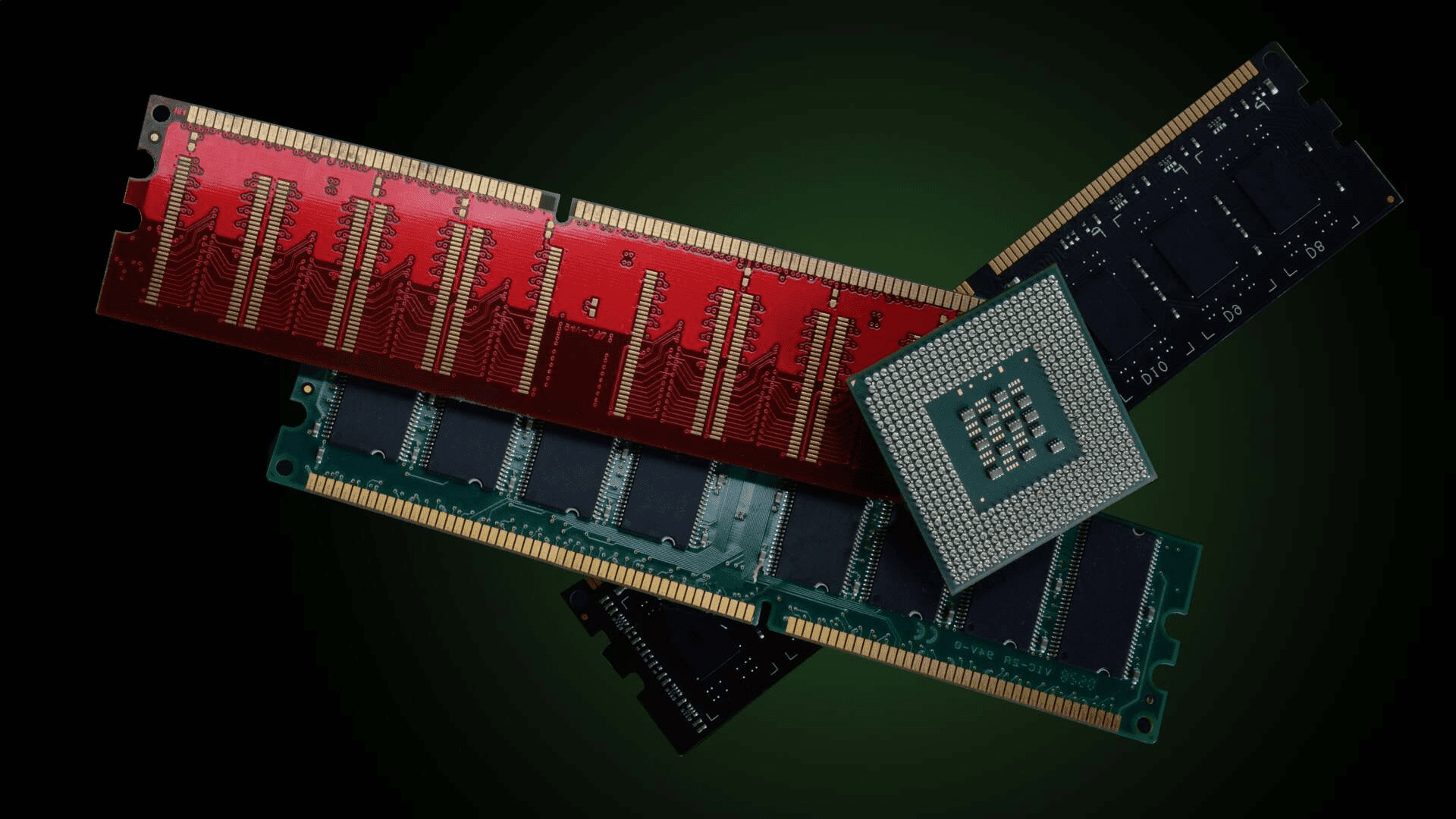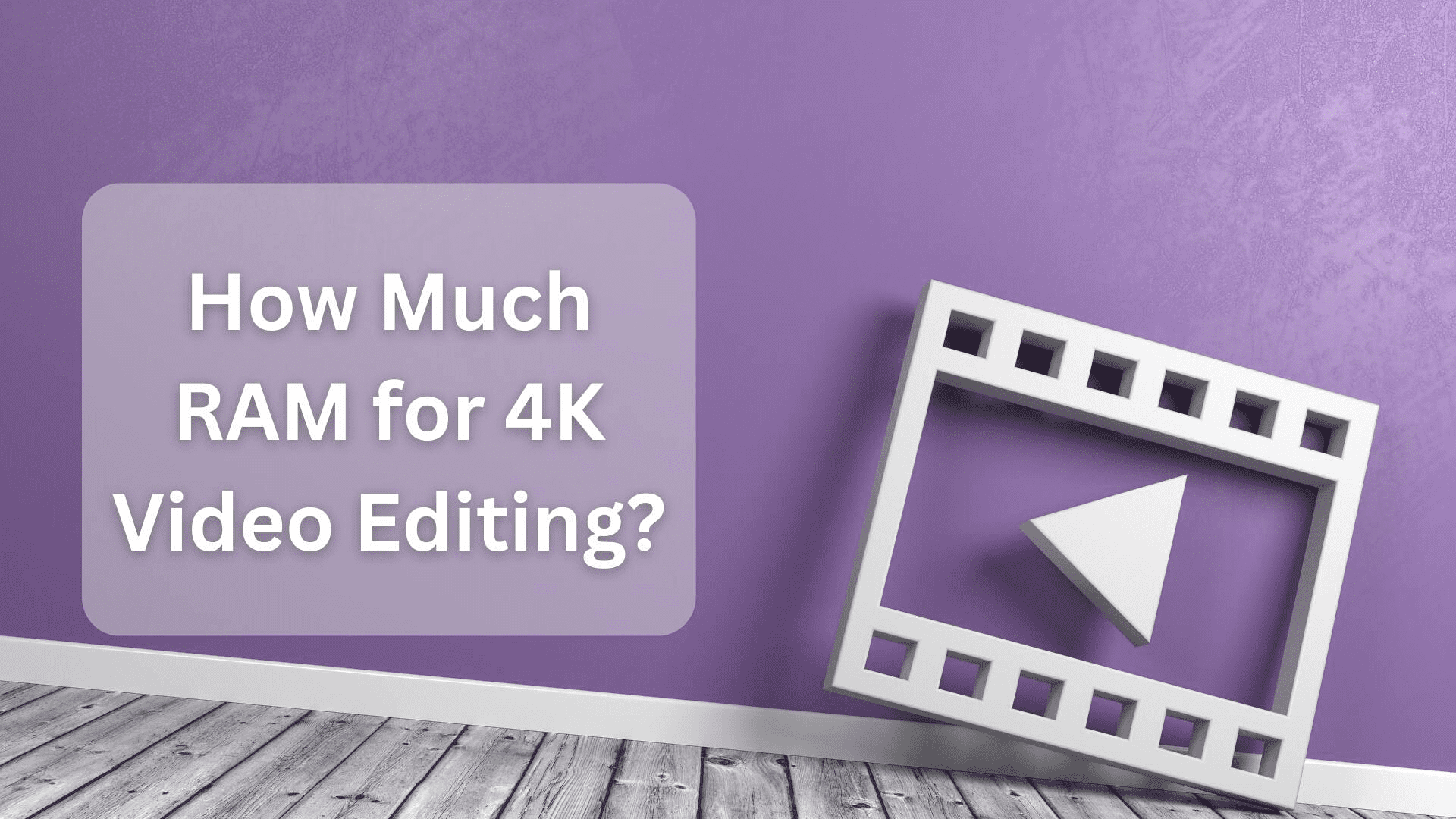Currently, in the United States, there are over 32,000 video editors. And most of them ask this important question, how much RAM for video editing do you really need?
Without sufficient RAM (Random-Access Memory), video editors suffer from slower render times, hindering their workflow.
Consequently, this leads to more time being wasted on finalizing projects. That time could instead be spent on finding clients, finishing other projects, and making more money.
With this in mind, it is important to know how much RAM you need for video editing projects.
How Much RAM do You Need for Video Editing

32 GB of RAM is ideal for Video Editing.
To give a short answer, 32 GB of RAM is enough to handle most video editing projects you will encounter. It covers the minimum requirements of all popular video editing software, and is enough to support 4K video editing.
Of course, going above 32GB definitely won’t hurt, but it is unnecessary in most cases, especially if you’re just starting out. However, having less than 32 GB of RAM might hinder your workflow when dealing with professional-grade projects.
Ultimately, the amount RAM you need for video editing depends on your individual needs as a video editor.
Before diving into greater detail, let’s briefly go through different RAM sizes and what they can offer you as a video editor.
8 GB
Editing with 8 GB of RAM is doable, but the editing process falters with files larger than 720p HD. Additionally, you might need to close all background programs while editing.
16 GB
Excellent for editing 1080p, and sometimes even 4K video projects in 8 bits.
32 GB
Perfect for 4K and great for any type of heavy-duty editing with the use of background software such as Adobe After Effects or Cinema 4D.
64 GB
For demanding editing projects in 8K, and up to a 10-bit bit depth.
Is 8GB RAM Enough for Video Editing?

Yes, you can do video editing with 8 GB of RAM. However, you will mostly be limited to working with video files of lower quality such as 720p HD.
Today, having 8 GB of RAM is the bare minimum requirement for using most video editing programs. This means that manipulating large files or using other programs simultaneously with your main video editing software is going to be a challenge.
On the other hand, this does not mean that you can’t get started editing videos with 8 GB system RAM.
It is true that things like editing capabilities and rendering speed will not be at optimal capacity with this much RAM. However, if you stay clear of more complex projects, you can definitely make the great use of your video editing workstation.
If your PC build has a lower RAM capacity, choosing the right video editing software is very important. Some software is better optimized for hardware resources than other programs, allowing for an efficient video editing experience with less RAM.
This includes Adobe Premiere Pro and Final Cut Pro X, both of which we will talk more about later.
The key takeaway here is to remember to work with compressed data, edit projects smaller, and close any unnecessary background tasks. This will ensure the best performance of your particular video editing setup.
Is 16GB RAM Enough for Video Editing?

If you are looking to edit video content in 1080p resolution or higher, having a video editing PC with 16 GB of RAM is a must.
There is no shortage of debate inside the video editing community about how much RAM is needed for video editing in different niches. Most would agree, however, that using complex software to edit Full HD video material requires at least 16 GB of your computer’s RAM.
In fact, video editing programs such as DaVinci Resolve require 16 GB of RAM minimum for editing Full HD footage. Of course, the amount of RAM needed will vary depending on which software you are using and what kind of video material you are working with.
If you are past your rookie phase and are looking to take on more demanding projects, upgrading to 16 GB is a good move to make.
Professional video editors often find themselves needing to use multiple programs at the same time. The additional RAM will help speed up your workflow when running all the tasks simultaneously.
Is 32 GB RAM Enough for Video Editing?

32 GB is the ideal amount of RAM for video editing. It satisfies the RAM requirements of any industry-standard video editing software, and is perfect for editing 4K video material.
Once you upgrade to 32 GB, you will rarely have to worry about not having enough RAM for video editing.
Consequently, editing 4K video becomes a breeze as the available RAM far exceeds the RAM usage of your computer’s operating system, program and application data, and all your video editing tools combined.
Upgrading your video editing PC or Mac with a 32-GB RAM module can be a bit pricy. However, having more RAM will greatly improve performance. So much so that the time you save thanks to faster workflow will be well worth the investment.
With new multitasking possibilities, quicker renders, and faster caching, 32GB RAM is likely all you will ever need for video editing. Even if you work professionally, you are more likely to run out of hard disk space than RAM.
Do You Need 64GB for Video Editing?

As we go up to 64 GB of RAM or more, the possibility of not having enough memory becomes virtually non-existent. Not even Google Chrome can take up that kind of RAM.
There is a general consensus among videographers that having more RAM for video editing is never bad. The thing is, at the moment, you can’t get 64 GB of RAM from a single RAM module. Going above 32 GB means you have to use 2 or more RAM sticks together.
This requires a bit more technical know-how than usual. For example, one of the pre-requirements for using multiple RAM modules is having a motherboard with a sufficient number of RAM sockets.
Knowing this, many people have asked themselves: Is there a practical use for this amount of RAM; and do I really need it?
Short answer: Yes, there is a practical use. No, you probably don’t need it.
High-end professional video editing can often include working with highly processed 4K, or even 8K footage with tons of layered effects.
As projects of this caliber are often delegated to companies rather than individuals, it is only logical that the amount of RAM needed for these kinds of projects can be well above the needs of a freelance video editor.
How Much RAM for 4K Video Editing?

4K resolution video editing requires 32 GB of RAM for an efficient workflow.
Any question that starts with ‘how much RAM’ depends on your particular workflow, the specifications of your computer, and the programs you use.
Nonetheless, a general rule of thumb is that 32 GB of RAM is enough memory for editing 4K footage. Here are some reasons why:
Multitasking
Multitasking is an integral element of every video editor’s work process. Equipping your computer with the appropriate amount of RAM allows you to run multiple programs simultaneously without dropouts and lag spikes.
Caching
RAM is responsible for caching preview files of your imported video material. Having these files cached quickly and ready to go allows you to easily navigate through your project, resulting in a much faster workflow.
Processing
A single frame in 4K resolution with a 10-bit bit depth holds roughly 47 MB of raw uncompressed data. When you are editing, you want your files to be processed as fast as possible to eliminate unnecessary downtime. Having more RAM helps keep your software quick and agile.
32GB vs 64GB RAM Video Editing

The best way to answer this question is to actually test the different RAM module sizes in a controlled setting, and compare the results.
To conduct the experiment, YouTuber and videographer Stefan Malloch is here. Using Adobe Premier Pro on his computer, Stefan will test between three differently-sized RAM setups: 16GB, 32GB, and 64GB.
With consistent settings, using a 12 minute video in 4K resolution with a target bitrate of 110 Mb/s, let’s take a look at the results produced by the different RAM configurations.
Interestingly enough, we can see that having more RAM does improve performance by a considerable amount. With each upgrade, the computer seemed to run smoother, and was better capable of multitasking.
The RAM Requirements for Different Video Editing Software

Here are some RAM requirements of popular programs that we mentioned earlier.
Adobe Premiere Pro
If you’re interested in picking up Premiere Pro, the minimum requirement is 8 GB of RAM for basic edit work. However, if you intend to work with HD or 4K footage, you will have to upgrade to 16 GB or 32 GB.
Final Cut Pro X
As mentioned earlier, Final Cut Pro X is better optimized for hardware resources than some of its counterparts. The amount of RAM you need to edit HD Footage on this program is only 4 GB.
To edit 4K footage or 360-degree videos, the baseline requirement only jumps to 8 GB of RAM. Very budget-friendly!
DaVinci Resolve
DaVinci is probably the most demanding program of the three. Similar to Premiere Pro, this program demands a minimum of 16 GB of RAM for Full HD, and 32 GB for 4K or higher.
What type of RAM to get

Building a compact computer setup is the best way to ensure an optimal workflow. With that in mind, it is important to know how to choose the best RAM modules for your system.
Let’s wrap this up with a few tips on choosing the right modules for your setup.
- Make sure the RAM module is compatible with your motherboard and processor. Incompatible modules simply won’t work, while modules with the wrong specifications are likely to underperform.
- Use the latest technology that your system supports. RAM speed is measured in Megahertz, just like the clock speed of a processor. If your system supports DDR4 speed, make sure to select a DDR4 RAM module.
- Avoid mixing modules with different specifications. If you are using more than one module, make sure they all have the same frequency, capacity, and timings.
- Less is More. If you are aiming for 32 GB of RAM, try using a 2×16 GB configuration rather than a 4×8 GB one. Always try to leave some room for future expansions. You never know when you’ll need them.
Know Your Gear
Developing a deep understanding of your tools as an artist is key to achieving mastery.
Now that we’ve refreshed your knowledge on the importance of RAM and how you can use it to your advantage, feel free to do research of your own. Visit your local computer store or browse online, you might find the ideal piece of gear that you’ve been looking for.
Best of luck, and remember to keep improving your creative weaponry, always.

